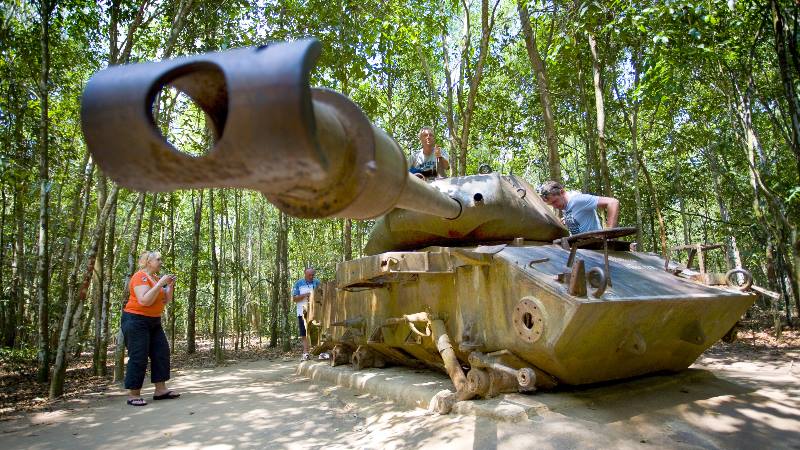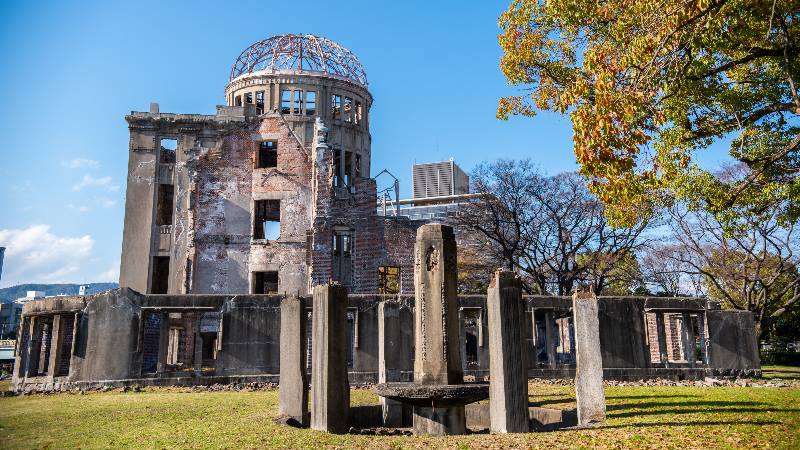Hiroshima, Nagasaki, Auschwitz, Cu Chi tunnels, the site of 9/11. Places where significant events have taken place and changed the course of history. Challenged our perceptions of the world we live in, and made each and every one of us think about the way we all act and live together. They are moments in time that should never be forgotten. They are now a part of what’s called dark tourism. Places we can all visit, experience and learn about.
Should we be allowed to visit these places as part of our tourism experience? Is there a case for Dark tourism in general? And when do these places go beyond a reminder of history and become a form of travel entertainment?
We take a look at the case for and against dark tourism and whether they should remain an essential part of the tourism experience.
The Case FOR Dark Tourism by Sasha Selkirk

As dark tourism becomes increasingly commonplace amongst today’s travelling community, the controversy surrounding it also heightens, and understandably so. I, for one, make a living out of sharing my travel experiences yet rarely will I talk about the time I crawled through the Cu Chi tunnels in Vietnam or wandered through the Killing Fields in Cambodia. But why does this stigma exist?
Yes, the idea of linking recreation with human atrocity is perverse, but it would be absurd to condemn the 2.1 million visitors to Auschwitz last year as sadists. It’s not a toss-up between Disney Land and Hiroshima, and it’s not about entertainment, it’s about education.
For me, touring the Cu Chi tunnels didn’t mean snapping a selfie in the trenches or firing an AK47 at the shooting range (unfortunately a thing…). I was there to learn. I studied the Vietnam War for A-level History, and that’s precisely what it was to me: history. But suddenly I was confronted by the hard-hitting reality of genocide, the aftermath of which still reverberates throughout modern Vietnam.
It’s easy to relegate something to the past when encountered through the detached unreality of a school textbook but witnessing something with your own eyes is another story. Seeing is believing and whitewashing over or shutting our eyes to inhumanity is, in my opinion, the greater evil.
Approached ethically, dark tourism exists to empower the victims of these atrocities, not to exploit them, and to open our eyes to their suffering. I, for one, would rather be an inquisitive traveller than an ignorant foreigner.
The Case AGAINST Dark Tourism by Gavin Darvell

I’ve been to Auschwitz, stood underneath the exact spot where the Hiroshima and Nagasaki nuclear bombs exploded. Walked around the site where the Twin towers once stood. Places that are now etched into our history, moments in time that caused great devastation and loss of life. But now these places are nothing more than a tourist attraction. A place to tick-off and say ‘I’ve been there’.
Was visiting Auschwitz, Hiroshima and Nagasaki fun? No, it wasn’t, it was heartbreaking. Was visiting these places educational? Yes, of course. Events of a similar nature should never happen again, and these places are a reminder of that fact. A beacon of peace teaching us never to cross those lines again. But as a tourist attraction, all be it under the Dark tourism banner. Surely it’s time these places are left as memorials rather than a tourist attraction.
I know there will be those shouting– ‘well you’ve been so why can’t I?’ I get that, but perhaps the time has come to restrict the visitor numbers at the very least. Yes, you can ethically run these attractions, but they all still pander to tourists needs. Limit the visitors, make these places of special historical significance and remembrance only. Symbols of our past not as places for dare I say it ‘mass tourism.’
Limit to small group tours or educational groups. So that they can remain places of remembrance. We must never forget, but having these sites under the banner of dark tourism just doesn’t sit comfortably to me. They shouldn’t be labelled, they are just that historical places to learn from and remember. There needs to be change before they do fall completely into being categorised as just another tourist attraction to visit. It’d be a sad day if that were to happen.
So what you do think? Should we close these places for public consumption or should they remain as an ethically run, historical monument to an event that caused considerable damage or death? We’d love to know.